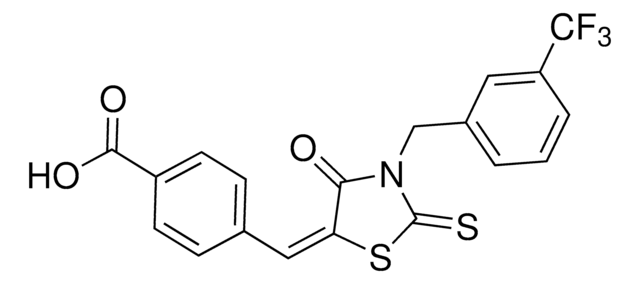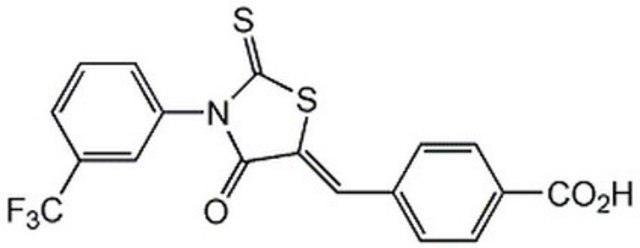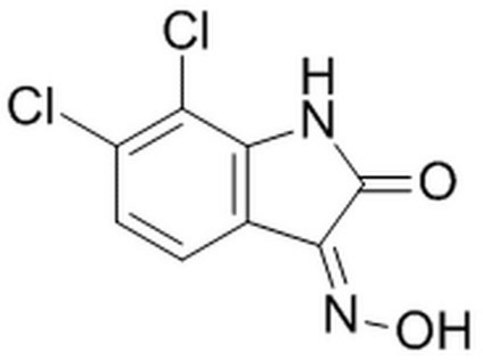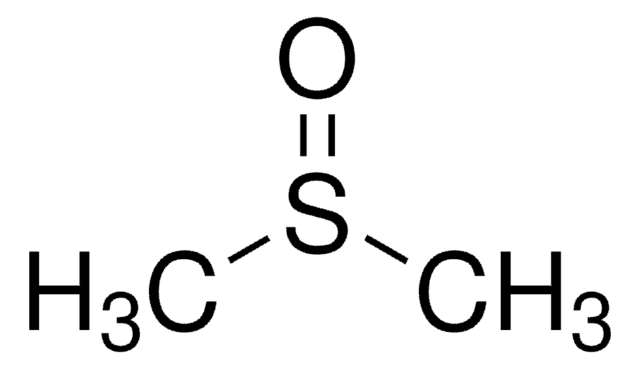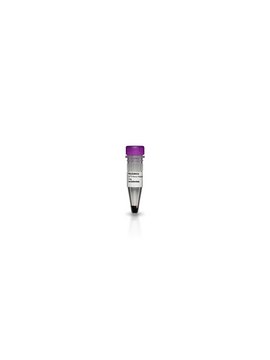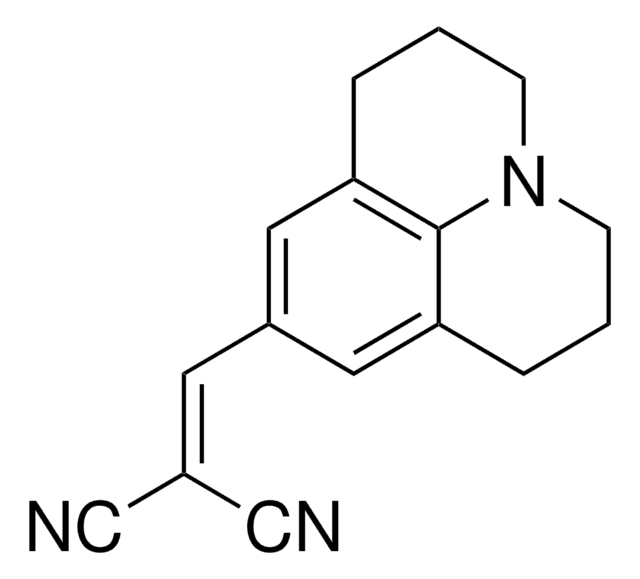Recommended Products
Assay
≥98% (HPLC)
Quality Level
form
powder
manufacturer/tradename
Calbiochem®
storage condition
OK to freeze
protect from light
color
red-orange
solubility
DMSO: 100 mg/mL
storage temp.
2-8°C
General description
A cell-permeable TPE-Cy adduct that acts as a two-channel ratiometric fluorogen and is sensitive to intracellular pH in the entire physiological range.
A cell-permeable, biocompatible tetraphenylethene-cyanine (TPE-Cy) adduct that acts as a two-channel ratiometric fluorogen and is sensitive to intracellular pH in the entire physiological range. Displays a large Stokes shift and exhibits aggregation-induced emission (AIE). Following its entry into live cells, it is distributed in the cytoplasm, accumulates in organelles, and becomes fluorescent. Interacts with the lipid components of the cells and shifts its color transition point of the red-to-blue emission from extracellular pH 10 to intracellular physiological pH range. At neutral pH it provides a strong blue emission (peak at 489 nm), which is enhanced at pH 8.07. However, acidification of medium causes a reduction in the blue emission (489 nm) and induces red emission (peak at 615 nm). The ratiometric red and blue signals can serve as an indicator for local proton concentration in the cell. Does not affect cell viability up to 12.5 µM concentration.
A cell-permeable, biocompatible tetraphenylethene-cyanine (TPE-Cy) adduct that acts as a two-channel ratiometric fluorogen and is sensitive to intracellular pH in the entire physiological range. Displays a large Stokes shift and exhibits aggregation-induced emission (AIE). Following its entry into live cells, it is distributed in the cytoplasm, accumulates in organelles, and becomes fluorescent. Interacts with the lipid components of the cells and shifts its color transition point of the red-to-blue emission from extracellular pH 10 to intracellular physiological pH range. At neutral pH it provides a strong blue emission (peak at 489 nm), which is enhanced at pH 8.07. However, acidification of medium causes a reduction in the blue emission (489 nm) and induces red emission (peak at 615 nm). The ratiometric red and blue signals can serve as an indicator for local proton concentration in the cell. Does not affect cell viability up to 12.5 µM concentration.
Please note that the molecular weight for this compound is batch-specific due to variable water content.
Please note that the molecular weight for this compound is batch-specific due to variable water content.
Biochem/physiol Actions
Cell permeable: yes
Warning
Toxicity: Standard Handling (A)
Reconstitution
Following reconstitution, aliquot and freeze (-20°C). Stock solutions are stable for up to 3 months at -20°C.
Other Notes
Chen, S., et al. 2013. J. Am. Chem. Soc.135, 4926.
Legal Information
CALBIOCHEM is a registered trademark of Merck KGaA, Darmstadt, Germany
Storage Class Code
11 - Combustible Solids
WGK
WGK 3
Flash Point(F)
Not applicable
Flash Point(C)
Not applicable
Regulatory Information
新产品
Certificates of Analysis (COA)
Search for Certificates of Analysis (COA) by entering the products Lot/Batch Number. Lot and Batch Numbers can be found on a product’s label following the words ‘Lot’ or ‘Batch’.
Already Own This Product?
Find documentation for the products that you have recently purchased in the Document Library.
Our team of scientists has experience in all areas of research including Life Science, Material Science, Chemical Synthesis, Chromatography, Analytical and many others.
Contact Technical Service